Allison M. Dickson's Blog, page 22
February 29, 2012
At Long Last! Allie's Indie Pub FAQ!
Have you been itching to get your brilliant opus into the hands of readers by any means necessary, including taping the pages to people's windshields, tying it to bricks and throwing it through your neighbor's windows, or standing outside Simon and Schuster's doors, demanding they read your manuscript under threat of self-immolation?

This is not a good way to get a book deal. Unless it's a posthumous biography.
Well, it turns out publishing has become a bit more accessible in the modern age, thanks to the advent of ereaders and self-publishing services like Smashwords, Kindle Direct, and PubIt. And I'm here to answer some of the most common questions you might have when it comes to getting started. I guarantee that unlike the above mentioned methods, the secrets I'm about to share with you will keep you out of jail. Unless you plagiarize, or write a book so bad it starts a riot. If you have a question I have not answered, just leave it in a comment.
Note: This is intended to be a basic FAQ. If you need more advanced level instruction on any of these topics (like on formatting or how to design a good cover), Google is your friend. This is merely to send you on your way so you can investigate with a better understanding of what the process is like.
1. I've decided I want to self-publish. Now what?
Before you do anything else, you want to edit that bad boy. Actually, I take that back. You want someone else to edit it. Trust me on this. If you can't afford a pro, pick your most literate colleagues. Do NOT pick somebody who is going to blow smoke up your ass because they're too afraid to hurt your feelings. It's far easier to take criticism from a single honest person than hordes of complete strangers on Amazon or GoodReads who are aces at caustic and/or passive-aggressive reviews that could obliterate your authorly reputation and writerly dreams within seconds. Not everyone is going to love your story, even if it's perfectly edited, but their critiques should be more centered on the story, not sloppy editing. The internet is forever. Don't come to this process lightly. I've been there.
You also want to format your manuscript so it will be readable across a variety of ereader platforms. One word of advice on this topic: less is more. Don't go all crazy with fancy headers and fonts and off the hook internal graphics, unless you're a whiz at writing code. The best book on this topic is free, and it can be downloaded from Smashwords. If you get their formatting right, it will be right for pretty much everybody. Even Kindle.
2. Which one should I pick? Smashwords, Barnes & Noble, or Amazon?
If your goal is exposure in as many markets as possible, publish on all of them. If you publish on Smashwords and follow their guidelines for getting into their Premium Catalog, your book will be distributed to Barnes & Noble, Sony, Apple, and Diesel. You can also opt not to distribute to Barnes & Noble through Smashwords and just do it yourself through their PubIt service. Doing this will allow you to track your sales in real time and receive your royalties faster. There is about a month-long delay on Barnes & Nobles sales reporting through Smashwords, and even longer for royalty payments. But there are advantages to letting Smashwords handle your all of your distribution needs, and I will get that to a bit.
Note: you will always need to upload manually to Kindle Direct Publishing. Amazon doesn't like sharing the sandbox with anyone, and this includes Smashwords. However, once you have your manuscript and cover all ready, it's just a matter of simply uploading them to both platforms.
However, maybe you really only want to pick one service, because this is just a trial thing for you, and you don't want to have to keep track of a bunch of places at once. Well, Amazon is where the majority of readers are going to be but for the simple fact that most people who download books do so with Kindles. Also, if you have no desire to distribute your book elsewhere, you can take advantage of the KDP Select program, which allows your book to be a part of the Amazon Prime lending library, where members can get your book for free and you'll still get royalties for it. I've had lackluster results with this myself, but a lot of people seem to be going in this direction, and it's always worth a test run. You have to give Amazon 90 days of exclusivity with your title, but if you're unhappy after that period, you can choose not to enroll it again.
3. What should I do about a cover?
You really need a cover that doesn't suck. That's the long and short of it. You can either make your own or have someone make it for you. If you're doing it yourself, you might be able to skate by on something less-than-stellar for a free or super cheapie download, but even then, there are a few guidelines you want to adhere to.
It should have just as much impact (if not more) as a thumbnail as it does in full size. People who shop via their ereaders often don't see more than a thumbnail when they're browsing. Your fonts should be clear and not too "scripty." If you have to squint in order to comprehend the text when the image is in full size, then it definitely won't do as a thumbnail.
Because your cover dimensions should be on the larger size (I design mine on a 1600x2400 scale so that they look decent whether they're shrunken down or blown up), you should use high-res images. Stock photo sites like iStock have beautiful images, but they can get pricey. You can find a lot of royalty-free pictures, art, and stock photos from Creative Commons image searches, stock.xchng, and Deviant Art. Make sure to read the permissions for any pictures you use and credit the person properly in the front matter of your book if it is specified that you must do so.
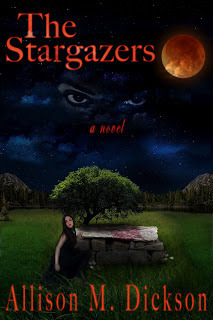
You might also be wondering what kind of software you can use to put a cover together. If you have a professional graphic design program, you're good to go. There is a free open-source piece of software you can get that is very analogous to Photoshop, and that's GIMP. That's what I use, and I like it just fine. Photoshop Elements or even Picasa can also do the job, albeit their options are more limited.
Remember, sometimes simpler is better. Don't feel like you need some sort of elaborate illustration or design to have a striking cover. Usually, you just need one very well-composed picture or a well-textured background to design your text around. Take a look at what's out there right now and get some inspiration. If you're still feeling defeated by the idea of designing your own cover, there are a lot of people out there who are good with the programs who won't charge too much for a simple ebook design. I have two covers in my library that were designed by someone else. My graphic designer friend Jeff Fielder designed the one for Scarlet Letters, and another artist friend, Florence Sorensen, designed the cover for The Stargazers.
4. All right, I have the cover and my manuscript ready. What should I charge?
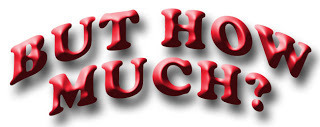
There are two competing schools of thought on this.
The first is that if you price your book too high, nobody will buy it. But what is too high? For me, anything over $2.99 for an indie book is just asking too much. The most highly paid indie authors right now have achieved their success pricing at or below that (though I'm sure writing excellent books had more to do with that). Some might disagree with this, but that's my opinion on the matter. $2.99 or below is just a good sweet spot, and it offers a decent profit margin.
The second school of thought states that if you price it too low (say a novel for a buck) people will think it's junk and won't want to bother. Now, I tend to think that this system is becoming more and more outdated as time goes on and as people's perception of digital content changes. Many think it should be cheap because they aren't buying a tangible product. I've had people eat up my books at the $.99 price point, and not buy even a single one at $2.99.
Of course, FREE is the best price in the world--for the reader. Sure, you won't make any money, but if you want hordes of instant readers and lots of reviews in a relatively short period of time, getting your book to be priced free on Amazon or Barnes & Noble is the way to go. You can't set your price at zero at either of those sites, though. That takes a little finagling, and I'll get to that in a bit.
The best option between the two competing ideologies when it comes to price is: neither. Why? Well, think of Amazon as a giant ADHD-stricken robot that becomes bored when you don't do anything different for awhile. No one knows the exact algorithms behind this, but it seems that anytime you change your price on any of these sites, there is a short but very discernible sales bump. It's possibly because the retailer makes your product more visible to prospective buyers in the immediate aftermath of a price change.
If it's a "new" free title or a "new" $.99 title or whatnot, people who regularly browse those categories are more likely to see it. Therefore, it's beneficial to try and fluctuate your prices on a regular basis. I'm more comfortable with keeping my short stories at $.99 or below, so I will rotate those prices every few weeks or so. When it's free, it gets a ton more downloads, climbs the ranks, and garners more reviews. Then those reviews and increase sales rankings entice the people who are looking for something to actually BUY when it's $.99. You can also do this with higher priced items. A $2.99 title can be discounted for a couple weeks to $1.99 or $.99 (or free), and then bumped back up later on. You will likely see a sales bounce of some sort when this happens.
Either way, you shouldn't get too comfortable with ANY price point. If you want to make money, you have to be diligent and shrewd, and you have to be willing to take some hits.
5. Why should I make any of my work free? And even if I did, how do I go about it on Amazon or Barnes & Noble?
Let's face it. Your work is your best advertisement. Sure, you can spend money on ads and do a lot of footwork spreading the word about your book. Those things will cost you a lot of money and time, which are two things a lot of us don't have these days. This is why letting your work speak for you is probably the most efficient way of getting exposure. I priced a handful of my short stories free last fall. Since then, I've garnered a lot of reviews and thousands of downloads, and I've built a fanbase with only the effort it took to actually write the stories. Since then, many of those people have come back to buy my paid work, and my paid sales have increased every month since I started offering free titles.
But how do you make a book free across all platforms? Remember when I said that there was an advantage to letting Smashwords distribute your work for you? This is it. Smashwords is the only online retailer that allows authors to make their work free. By doing that, when it distributes to the other retailers, it will also have a $0 price tag. Then you can notify Amazon through the product page that there is a lower price available. Before long, in most cases anyway, they will price match it. And when they do, the downloads will come rolling in.
If you want to revert to the original price after awhile, you have to reverse the process. Raise the price through Smashwords, wait for that new price to proliferate to the other retailers, and then notify Amazon (through KDP Customer Service) that your book is no longer free elsewhere, and you want them to raise the price again. Within a couple days, in most cases, the price will be back where it was.
However, there is a caveat. Amazon's Terms of Service allows them to change your book's price at any time if they find it cheaper anywhere else. Also, they might not even price match your book at all. The mysteries of the Amazon Pricing Gods are a... mystery.
6. I'm not getting any reviews or downloads. And oh crap, someone just refunded their purchase! What's going on?!
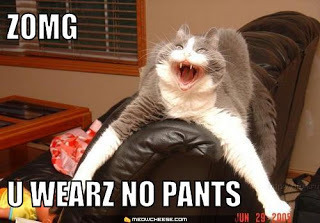
Welcome to the emotionally draining world of epublishing, where it's easy to develop a compulsion to hit the "refresh" button on your sales page at least twice an hour. Perpetual zeroes or paltry single digit monthly sales may very well be in your future when you start this whole thing. It happens, and it's nothing to be ashamed of. There are hundreds of thousands of people out there just like you with titles available at these stores. Often, poor initial sales are just an indicator that you're having trouble standing out. And it's hard to stand out when you don't have any reviews or when you have a product page that doesn't have a whole lot of activity on it. Other times, your book could have a formatting error or some proofing issues that you didn't catch the first time around. If you've checked over your book one more time and all is well, then you can start thinking of other options
As I discussed in the previous question, free titles are a good way to get yourself some readers, but it's not the only way. There are a lot of sites out there devoted to reading and reviewing indie books. A simple Google search will yield some nice results. Most of these people have made a living (or a fruitful hobby at least) by devoting their time reading people's books and writing reviews for them. Often at no charge. If you're up to paying a chunk of change for a "professional" review, Kirkus has an Indie wing worth checking out that could possibly give your book some real street cred.
Keep in mind that refunds will happen from time to time. Sometimes people purchase books by accident. Sometimes they're so not into your book that they don't want it on their devices anymore. Try not to take it too hard. Because you don't know exactly what the nature of the refund is, it's best not to think the worst.
7. What kind of stuff should I put in my book? You know, other than the book?
The beauty of epublishing is that the world is kind of your oyster. Want to put in a foreword or some author's notes? Go for it! How about an alternate ending or some other fun trivia or bonus material in the end? Or a poem you wrote, or some original artwork? How about a preview for one of your other titles? Yes, yes, and yes. You are your own publisher. This means you have complete control over the package you put out there.
Just don't do something stupid like quote song lyrics or lift passages from famous books and things like that, unless you like tempting the copyright police into making you their bitch. At any rate, if the material is yours or if you have express permission to use it, or if it's something that won't have you pointing the finger at me and saying, "But Allison M. Dickson SAID I could!" by all means, put it in the book. It might even help you sell extra copies. When I put the alternate ending for my short story "Aria" in my collection Dead Wives Tales, I was able to use the standalone free version of "Aria" to boost sales of the collection. Tying your work together like that is a surefire way to get people interested in coming back for more.
8. What do you put on the title page of your ebooks?
The simplest way to answer that is to look at a free sample for any of my books on sale right now. Or any other book for that matter. As long as it has some sort of retailer's license agreement on there and your copyright info, you're pretty much golden.
9. Do I need to buy an ISBN number?
The ISBN is basically the numerical fingerprint for your book, and there are a number of ways you can acquire one. Amazon automatically assigns an ASIN, which is its own proprietary identification number, but you can also include your ISBN on your Amazon listing. You can purchase your own ISBN's through Smashwords for $10 each, which allows you to choose your publisher's name. That means, you could publish it under "Allison M. Dickson Press" if you like. However, you can get free ISBNs through Smashwords if you allow them to be listed as the publisher for your work. Note that you will need an ISBN if you want to distribute your books to the Apple and Sony stores.
10. What are some other ways to get the word out?
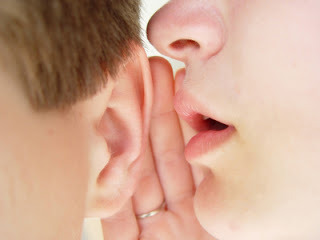
"Vampires poop rocks. Seriously, check out this Scarlet Letters book..."
Some people swear by being active on social media, but I happen to think (at least for the purpose of selling books) that the effects on sales are pretty neutral. Sure, get yourself a Twitter and Facebook page. Join GoodReads. Start a blog if you haven't started one already. They're a good way to be accessible to your readers. But keep in mind that social networking is quite time consuming, and it has a way of sucking time away from your writing. Me, I was already a social media junkie when I started doing this, so I didn't really have to establish much of anything at all. But when it comes to using it for marketing purposes, try not to be endlessly annoying and spammy about your books, or people will hate you. In a sense, be the kind of person you'd want to buy a book from. Last time I checked, no one likes buying things from obnoxious a-holes.
Other things you can do include reading and reviewing for people who might read and review you. Also see about maybe paying for a couple of well-placed ads on some popular blogs or websites related to the kind of stuff you write. See where your readers like to hang out and see how you can make yourself visible (WITHOUT spamming or being obnoxious).
But the best thing you can do is keep writing and keep publishing . A wider catalog will get you more exposure, and readers like seeing that an author has some variety to choose from. The more stories you have available, the more chances you have of one of them catching on.
11. Should I release my short stories as singles or in a collection?
Yes. Again, it's about exposure. Why limit yourself? Offer your short stories as both singles and full collections. It appeals to both kinds of customers. You have those who want to buy what they want to buy, and you have those who maybe read one story, and then want to scoop up everything else at a single go. It's also a better value for them, because say you have single short stories available for a buck each. You can offer a whole collection of, say, 8-10 stories for $2.99. Not to mention, you get a higher royalty on the collection sale. Doing this has the net effect of expanding your available library and bumping up your sales. You can also put in some exclusive goodies that might make your collection more appealing. I only have one collection out now, but I'm working on my first large volume of shorts comprising of everything I have released as of now.
12. Can I do all this while still trying to get a book deal from a traditional publisher?
Sure, why not? A lot of people have a backlist of titles available for purchase online while trying to sell their other work to the traditional market. People talk about the downfall of traditional publishing and the inevitable death of bookstores, but in my opinion, while both markets are still alive and kicking, there is no reason at all you couldn't be pursuing publication elsewhere while selling independently. It's up to you whether you still want to try to query out work that you currently have available for sale. Some publishers are wary about that, while others are interested in looking for successful indie titles and bringing them to a wider market. It really depends on the kind of book. Heck, you could wind up being courted by a publisher or an agent without even trying, if one of them happens to find your work. There are publishing people out there scouting the indies, and one of them might find you.
Those are all the questions I have right now. If you have any others, throw them my way, and I'd be happy to take a stab at them!

This is not a good way to get a book deal. Unless it's a posthumous biography.
Well, it turns out publishing has become a bit more accessible in the modern age, thanks to the advent of ereaders and self-publishing services like Smashwords, Kindle Direct, and PubIt. And I'm here to answer some of the most common questions you might have when it comes to getting started. I guarantee that unlike the above mentioned methods, the secrets I'm about to share with you will keep you out of jail. Unless you plagiarize, or write a book so bad it starts a riot. If you have a question I have not answered, just leave it in a comment.
Note: This is intended to be a basic FAQ. If you need more advanced level instruction on any of these topics (like on formatting or how to design a good cover), Google is your friend. This is merely to send you on your way so you can investigate with a better understanding of what the process is like.
1. I've decided I want to self-publish. Now what?
Before you do anything else, you want to edit that bad boy. Actually, I take that back. You want someone else to edit it. Trust me on this. If you can't afford a pro, pick your most literate colleagues. Do NOT pick somebody who is going to blow smoke up your ass because they're too afraid to hurt your feelings. It's far easier to take criticism from a single honest person than hordes of complete strangers on Amazon or GoodReads who are aces at caustic and/or passive-aggressive reviews that could obliterate your authorly reputation and writerly dreams within seconds. Not everyone is going to love your story, even if it's perfectly edited, but their critiques should be more centered on the story, not sloppy editing. The internet is forever. Don't come to this process lightly. I've been there.
You also want to format your manuscript so it will be readable across a variety of ereader platforms. One word of advice on this topic: less is more. Don't go all crazy with fancy headers and fonts and off the hook internal graphics, unless you're a whiz at writing code. The best book on this topic is free, and it can be downloaded from Smashwords. If you get their formatting right, it will be right for pretty much everybody. Even Kindle.
2. Which one should I pick? Smashwords, Barnes & Noble, or Amazon?
If your goal is exposure in as many markets as possible, publish on all of them. If you publish on Smashwords and follow their guidelines for getting into their Premium Catalog, your book will be distributed to Barnes & Noble, Sony, Apple, and Diesel. You can also opt not to distribute to Barnes & Noble through Smashwords and just do it yourself through their PubIt service. Doing this will allow you to track your sales in real time and receive your royalties faster. There is about a month-long delay on Barnes & Nobles sales reporting through Smashwords, and even longer for royalty payments. But there are advantages to letting Smashwords handle your all of your distribution needs, and I will get that to a bit.
Note: you will always need to upload manually to Kindle Direct Publishing. Amazon doesn't like sharing the sandbox with anyone, and this includes Smashwords. However, once you have your manuscript and cover all ready, it's just a matter of simply uploading them to both platforms.
However, maybe you really only want to pick one service, because this is just a trial thing for you, and you don't want to have to keep track of a bunch of places at once. Well, Amazon is where the majority of readers are going to be but for the simple fact that most people who download books do so with Kindles. Also, if you have no desire to distribute your book elsewhere, you can take advantage of the KDP Select program, which allows your book to be a part of the Amazon Prime lending library, where members can get your book for free and you'll still get royalties for it. I've had lackluster results with this myself, but a lot of people seem to be going in this direction, and it's always worth a test run. You have to give Amazon 90 days of exclusivity with your title, but if you're unhappy after that period, you can choose not to enroll it again.
3. What should I do about a cover?
You really need a cover that doesn't suck. That's the long and short of it. You can either make your own or have someone make it for you. If you're doing it yourself, you might be able to skate by on something less-than-stellar for a free or super cheapie download, but even then, there are a few guidelines you want to adhere to.
It should have just as much impact (if not more) as a thumbnail as it does in full size. People who shop via their ereaders often don't see more than a thumbnail when they're browsing. Your fonts should be clear and not too "scripty." If you have to squint in order to comprehend the text when the image is in full size, then it definitely won't do as a thumbnail.
Because your cover dimensions should be on the larger size (I design mine on a 1600x2400 scale so that they look decent whether they're shrunken down or blown up), you should use high-res images. Stock photo sites like iStock have beautiful images, but they can get pricey. You can find a lot of royalty-free pictures, art, and stock photos from Creative Commons image searches, stock.xchng, and Deviant Art. Make sure to read the permissions for any pictures you use and credit the person properly in the front matter of your book if it is specified that you must do so.

You might also be wondering what kind of software you can use to put a cover together. If you have a professional graphic design program, you're good to go. There is a free open-source piece of software you can get that is very analogous to Photoshop, and that's GIMP. That's what I use, and I like it just fine. Photoshop Elements or even Picasa can also do the job, albeit their options are more limited.
Remember, sometimes simpler is better. Don't feel like you need some sort of elaborate illustration or design to have a striking cover. Usually, you just need one very well-composed picture or a well-textured background to design your text around. Take a look at what's out there right now and get some inspiration. If you're still feeling defeated by the idea of designing your own cover, there are a lot of people out there who are good with the programs who won't charge too much for a simple ebook design. I have two covers in my library that were designed by someone else. My graphic designer friend Jeff Fielder designed the one for Scarlet Letters, and another artist friend, Florence Sorensen, designed the cover for The Stargazers.
4. All right, I have the cover and my manuscript ready. What should I charge?

There are two competing schools of thought on this.
The first is that if you price your book too high, nobody will buy it. But what is too high? For me, anything over $2.99 for an indie book is just asking too much. The most highly paid indie authors right now have achieved their success pricing at or below that (though I'm sure writing excellent books had more to do with that). Some might disagree with this, but that's my opinion on the matter. $2.99 or below is just a good sweet spot, and it offers a decent profit margin.
The second school of thought states that if you price it too low (say a novel for a buck) people will think it's junk and won't want to bother. Now, I tend to think that this system is becoming more and more outdated as time goes on and as people's perception of digital content changes. Many think it should be cheap because they aren't buying a tangible product. I've had people eat up my books at the $.99 price point, and not buy even a single one at $2.99.
Of course, FREE is the best price in the world--for the reader. Sure, you won't make any money, but if you want hordes of instant readers and lots of reviews in a relatively short period of time, getting your book to be priced free on Amazon or Barnes & Noble is the way to go. You can't set your price at zero at either of those sites, though. That takes a little finagling, and I'll get to that in a bit.
The best option between the two competing ideologies when it comes to price is: neither. Why? Well, think of Amazon as a giant ADHD-stricken robot that becomes bored when you don't do anything different for awhile. No one knows the exact algorithms behind this, but it seems that anytime you change your price on any of these sites, there is a short but very discernible sales bump. It's possibly because the retailer makes your product more visible to prospective buyers in the immediate aftermath of a price change.
If it's a "new" free title or a "new" $.99 title or whatnot, people who regularly browse those categories are more likely to see it. Therefore, it's beneficial to try and fluctuate your prices on a regular basis. I'm more comfortable with keeping my short stories at $.99 or below, so I will rotate those prices every few weeks or so. When it's free, it gets a ton more downloads, climbs the ranks, and garners more reviews. Then those reviews and increase sales rankings entice the people who are looking for something to actually BUY when it's $.99. You can also do this with higher priced items. A $2.99 title can be discounted for a couple weeks to $1.99 or $.99 (or free), and then bumped back up later on. You will likely see a sales bounce of some sort when this happens.
Either way, you shouldn't get too comfortable with ANY price point. If you want to make money, you have to be diligent and shrewd, and you have to be willing to take some hits.
5. Why should I make any of my work free? And even if I did, how do I go about it on Amazon or Barnes & Noble?
Let's face it. Your work is your best advertisement. Sure, you can spend money on ads and do a lot of footwork spreading the word about your book. Those things will cost you a lot of money and time, which are two things a lot of us don't have these days. This is why letting your work speak for you is probably the most efficient way of getting exposure. I priced a handful of my short stories free last fall. Since then, I've garnered a lot of reviews and thousands of downloads, and I've built a fanbase with only the effort it took to actually write the stories. Since then, many of those people have come back to buy my paid work, and my paid sales have increased every month since I started offering free titles.
But how do you make a book free across all platforms? Remember when I said that there was an advantage to letting Smashwords distribute your work for you? This is it. Smashwords is the only online retailer that allows authors to make their work free. By doing that, when it distributes to the other retailers, it will also have a $0 price tag. Then you can notify Amazon through the product page that there is a lower price available. Before long, in most cases anyway, they will price match it. And when they do, the downloads will come rolling in.
If you want to revert to the original price after awhile, you have to reverse the process. Raise the price through Smashwords, wait for that new price to proliferate to the other retailers, and then notify Amazon (through KDP Customer Service) that your book is no longer free elsewhere, and you want them to raise the price again. Within a couple days, in most cases, the price will be back where it was.
However, there is a caveat. Amazon's Terms of Service allows them to change your book's price at any time if they find it cheaper anywhere else. Also, they might not even price match your book at all. The mysteries of the Amazon Pricing Gods are a... mystery.
6. I'm not getting any reviews or downloads. And oh crap, someone just refunded their purchase! What's going on?!

Welcome to the emotionally draining world of epublishing, where it's easy to develop a compulsion to hit the "refresh" button on your sales page at least twice an hour. Perpetual zeroes or paltry single digit monthly sales may very well be in your future when you start this whole thing. It happens, and it's nothing to be ashamed of. There are hundreds of thousands of people out there just like you with titles available at these stores. Often, poor initial sales are just an indicator that you're having trouble standing out. And it's hard to stand out when you don't have any reviews or when you have a product page that doesn't have a whole lot of activity on it. Other times, your book could have a formatting error or some proofing issues that you didn't catch the first time around. If you've checked over your book one more time and all is well, then you can start thinking of other options
As I discussed in the previous question, free titles are a good way to get yourself some readers, but it's not the only way. There are a lot of sites out there devoted to reading and reviewing indie books. A simple Google search will yield some nice results. Most of these people have made a living (or a fruitful hobby at least) by devoting their time reading people's books and writing reviews for them. Often at no charge. If you're up to paying a chunk of change for a "professional" review, Kirkus has an Indie wing worth checking out that could possibly give your book some real street cred.
Keep in mind that refunds will happen from time to time. Sometimes people purchase books by accident. Sometimes they're so not into your book that they don't want it on their devices anymore. Try not to take it too hard. Because you don't know exactly what the nature of the refund is, it's best not to think the worst.
7. What kind of stuff should I put in my book? You know, other than the book?
The beauty of epublishing is that the world is kind of your oyster. Want to put in a foreword or some author's notes? Go for it! How about an alternate ending or some other fun trivia or bonus material in the end? Or a poem you wrote, or some original artwork? How about a preview for one of your other titles? Yes, yes, and yes. You are your own publisher. This means you have complete control over the package you put out there.
Just don't do something stupid like quote song lyrics or lift passages from famous books and things like that, unless you like tempting the copyright police into making you their bitch. At any rate, if the material is yours or if you have express permission to use it, or if it's something that won't have you pointing the finger at me and saying, "But Allison M. Dickson SAID I could!" by all means, put it in the book. It might even help you sell extra copies. When I put the alternate ending for my short story "Aria" in my collection Dead Wives Tales, I was able to use the standalone free version of "Aria" to boost sales of the collection. Tying your work together like that is a surefire way to get people interested in coming back for more.
8. What do you put on the title page of your ebooks?
The simplest way to answer that is to look at a free sample for any of my books on sale right now. Or any other book for that matter. As long as it has some sort of retailer's license agreement on there and your copyright info, you're pretty much golden.
9. Do I need to buy an ISBN number?
The ISBN is basically the numerical fingerprint for your book, and there are a number of ways you can acquire one. Amazon automatically assigns an ASIN, which is its own proprietary identification number, but you can also include your ISBN on your Amazon listing. You can purchase your own ISBN's through Smashwords for $10 each, which allows you to choose your publisher's name. That means, you could publish it under "Allison M. Dickson Press" if you like. However, you can get free ISBNs through Smashwords if you allow them to be listed as the publisher for your work. Note that you will need an ISBN if you want to distribute your books to the Apple and Sony stores.
10. What are some other ways to get the word out?

"Vampires poop rocks. Seriously, check out this Scarlet Letters book..."
Some people swear by being active on social media, but I happen to think (at least for the purpose of selling books) that the effects on sales are pretty neutral. Sure, get yourself a Twitter and Facebook page. Join GoodReads. Start a blog if you haven't started one already. They're a good way to be accessible to your readers. But keep in mind that social networking is quite time consuming, and it has a way of sucking time away from your writing. Me, I was already a social media junkie when I started doing this, so I didn't really have to establish much of anything at all. But when it comes to using it for marketing purposes, try not to be endlessly annoying and spammy about your books, or people will hate you. In a sense, be the kind of person you'd want to buy a book from. Last time I checked, no one likes buying things from obnoxious a-holes.
Other things you can do include reading and reviewing for people who might read and review you. Also see about maybe paying for a couple of well-placed ads on some popular blogs or websites related to the kind of stuff you write. See where your readers like to hang out and see how you can make yourself visible (WITHOUT spamming or being obnoxious).
But the best thing you can do is keep writing and keep publishing . A wider catalog will get you more exposure, and readers like seeing that an author has some variety to choose from. The more stories you have available, the more chances you have of one of them catching on.
11. Should I release my short stories as singles or in a collection?
Yes. Again, it's about exposure. Why limit yourself? Offer your short stories as both singles and full collections. It appeals to both kinds of customers. You have those who want to buy what they want to buy, and you have those who maybe read one story, and then want to scoop up everything else at a single go. It's also a better value for them, because say you have single short stories available for a buck each. You can offer a whole collection of, say, 8-10 stories for $2.99. Not to mention, you get a higher royalty on the collection sale. Doing this has the net effect of expanding your available library and bumping up your sales. You can also put in some exclusive goodies that might make your collection more appealing. I only have one collection out now, but I'm working on my first large volume of shorts comprising of everything I have released as of now.
12. Can I do all this while still trying to get a book deal from a traditional publisher?
Sure, why not? A lot of people have a backlist of titles available for purchase online while trying to sell their other work to the traditional market. People talk about the downfall of traditional publishing and the inevitable death of bookstores, but in my opinion, while both markets are still alive and kicking, there is no reason at all you couldn't be pursuing publication elsewhere while selling independently. It's up to you whether you still want to try to query out work that you currently have available for sale. Some publishers are wary about that, while others are interested in looking for successful indie titles and bringing them to a wider market. It really depends on the kind of book. Heck, you could wind up being courted by a publisher or an agent without even trying, if one of them happens to find your work. There are publishing people out there scouting the indies, and one of them might find you.
Those are all the questions I have right now. If you have any others, throw them my way, and I'd be happy to take a stab at them!
Published on February 29, 2012 18:37
February 22, 2012
My Biggest Advice for Indie Publishers?
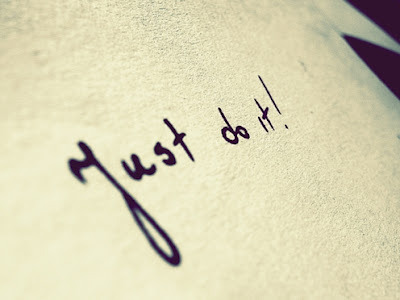
Over the last 18 months or so, I've fielded a lot of questions from writers interested in joining the e-publishing orgy that's going on right now with Amazon, Smashwords, etc. These are people who have toiled for years trying to break into the traditional publishing market, and who have finally started to see the appeal of just getting their work out into the world and, possibly, making a couple bucks in the process.
They want to know how I've done it. What sites do I go to, how do I prep the manuscripts, how do I do my covers, etc. These conversations are usually kind of lengthy because, well, I want to share all the information I've learned as I've gone. There is a lot of ground to cover. I will be working on a FAQ for my site really soon that will cover a lot of that information and answer a lot of basic e-publishing questions for you, but it all comes down to the nugget of wisdom I'm about to share with you right now. And that is this:
Just do it.
I am no expert on this topic. Not even by a long shot. When you consider the statistic that says it takes about 10,000 hours of work before one reaches expert status on something, I'm not even an expert at the craft of writing itself. So with self-publishing, I'm still trolling around in (MAYBE) intermediate newb territory. I've learned everything I have so far by simply DOING. Sure, you will make mistakes that way, but if you're crafty and diligent enough, you will learn from those mistakes.
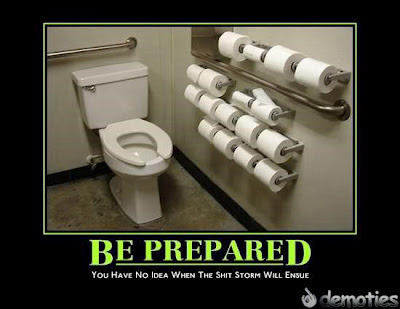
This is truth.
Hell, I'm still making mistakes. Honestly, when I first started doing this, I was mostly acting on a lark. I wanted to see something with my name on it at Amazon and Barnes & Noble. Really, ego was my only motivation. I didn't actually expect that thousands of total strangers would eventually find and read my stuff. As a consequence, my early manuscripts were not very clean. That was a big "my bad" on my part. Every indie writer blog you'll find online harps about the importance of having someone edit your stuff, and I agree with them, but I also know that editors are expensive (because I am one; however, this does not mean I'm qualified to edit my own work). So when you DO do it, make sure that you're prepared to greet a large audience, even though the likelihood is your audience won't show up for awhile. It's kind of like leaving the house with clean underwear on. Do it "just in case." If you can't afford an editor, have an intelligent person at least proofread it for you so you don't look like me, with dumb typos in your work that could have easily been avoided by having a fresh pair of eyes read your stuff. Me, I've since started using my husband, because he's amazing and he knows English real good. (see what I did there?)
Formatting was another learning process for me. My earliest books were spaced too wide, and their margins weren't great. I was about four ebooks in when I finally figured out how to properly format the Word document, and even now it isn't as perfect as I'd like, because I'm not a coder. However, I rest assured knowing that many ebooks from the Big 6 publishers look worse than my current titles up for sale. That's because there isn't a current industry standard on ebook formatting. Ebooks are just fugly right now, and there isn't a whole lot that can be done about it. So your book will be in good company that way.
But standards will come in time, so keep your eyes and ears open. Meanwhile, there is a great style guide at Smashwords that is free and is probably the best one you will find to date on how to format your document for epublishing.
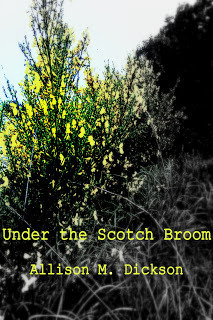
My first cover. Yeah, I know. It sucks.
My early covers were also not great. I haven't had the time to change the old ones, but honestly, I haven't been criticized too much for them, and they're selling and reviewing well despite that, so the incentive isn't there to spend the time fixing my old covers. Besides, the books with the shittiest covers are free.
However, I've since learned a lot more about cover art from some artistic friends of mine, and I've also learned how to better use the program on which I create my cover art (GIMP). I didn't take classes, and I have ZERO visual arts background. I just kept using it and experimenting with it (youtube is a great teacher if you're looking to learn new techniques) in my spare time, and I feel comfortable with it. To the point where I feel like all of my covers have a similar aesthetic, and reflect what I want them to reflect. Are my covers as good as a professional graphic designer's covers? Oh gawd no. I look forward to the day when the commission I pay for professional cover art will be easily covered by my book sales. But I think they're definitely passable, and I'm enjoying learning the process. I now consider making a cover a form of relaxation.
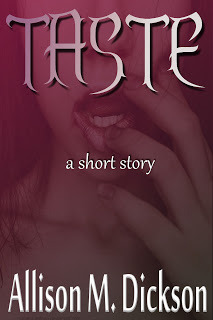
One of my latest covers. Progress.
Pricing is another hurdle I'm still learning the ins and outs of. I used to think that pricing my books too low would signify that they weren't worth what I was asking for them. But I wasn't getting any readers at all that way, so I started experimenting with free titles. This earned me thousands of readers. However, over time, I think the good that comes from free titles eventually begins to wane. Things just got stagnant. So I've returned a couple of my titles to the $.99 price point. I've since had a sales bounce because of it. I've also played with pricing on my other titles. Will a $.99 novel sell better than a $2.99 novel? I'm in the process of figuring that out (still waiting on the sales figures), but you can't be afraid to play with your prices in order to find what works for you. I am a firm believer that there is no hard and fast rule on how to price your books. Free titles worked wonderfully for me in building an audience and getting reviews. Regularly cycling my prices has also done me a lot of good sales-wise. So right now, I'm getting the sense that you never want to keep things the same price for too long, whether you're charging three bucks or no bucks.
All this is to say, you just have to be willing to experiment and play around and find what works for you. If you're tenacious enough, you will find that putting together an ebook, learning to format a manuscript, designing a cover, and setting your prices becomes easier as you go along. And you have to allow yourself to make mistakes and learn from them. My sloppy ass early ebooks... I try to think of them as those ugly garage band b-sides that you listen to when a famous band was just forming and you go, "Wha? That's the same band? They sound like shit, but I can see their potential."

Hey, don't hate! These guys could be the next Nickelback! Er...
Maybe not all the readers will agree with that. Maybe they'll read that book and go, "Fuck, she's a slob. I'm not reading anything else of hers." And I guess that's life. I have to take those things in stride. I have to build off those past failures and not let a few bad comments slow me down (believe me, I get at least one or two bad reviews a week, and I'm regularly telling myself it's not a reason to quit...even if I wonder from time to time if I really have what it takes). I think if you're not regularly doubting yourself at least a little bit, you're probably worse than you think.
When it comes to the crazy world of epub, your hands will get dirty. You have to stop worrying and fretting over every potential misstep. You have to be ready to have your pride stepped on a few times (or even more than a few) and question your sanity from time to time. You have to be ready to sacrifice at least a modicum of control over your work to the big corporations who are helping you sell it. You have to be ready for some people think you're not "legitimate" because you're self-publishing and not with a "real" publisher. You have to be prepared for the reality that your sales, at least at first, will be terrible. And then they will become a little less terrible, but they will still, ultimately, not even be enough to fill your gas tank every month. But every day that someone buys one of your books, it's a brighter day than it was before, and it's an awesome feeling.
But most importantly, if you really want to publish your own work, you have to get out there and JUST DO IT.
(The check's in the mail, Nike).
Published on February 22, 2012 14:51
February 20, 2012
Scarlet Letters Gets a Revamp
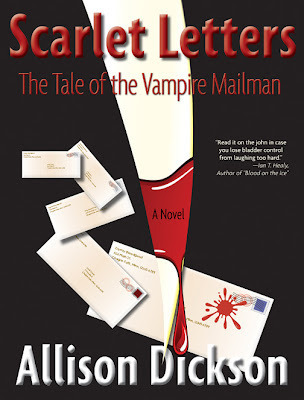
Cleaner, but not CLEANER, if you know what I mean...
Scarlet Letters has been on the market for awhile, and a lot of people have downloaded it. This pleases me to no end. What doesn't please me is that the version people have been reading hasn't been as clean as it could have been. Nothing hits an author in the gut more than a review stating that there were too many typos to ignore. I don't know how I missed these on the first several sweeps. I don't fancy myself a slob, but I'm not here to figure out why it happened, only to say I'm very sorry.
Over the last couple days, I have taken time out of my current works in progress to give the book a full re-vetting, and I'm pleased to say that I am very happy with how it turned out. If you have already downloaded the book for your Kindles and Nooks, there are a couple options for you to get the "New and Improved" version.
1. I have made it available for free on Smashwords for a limited time in order to allow people to replace it instantly in any format. All you need to do is sideload it onto your device by downloading the format you need to your computer, and then connecting your Kindle or Nook to your computer and moving the file over. Takes a couple minutes total, and it's very simple.
2. If you purchased through the Kindle or Barnes & Noble stores and don't feel like hassling with Smashwords, you can contact the customer service departments about getting the new file sent to your device. As of right now, there is no real automated way for customers to replace previously-purchased copies. However, you can't do this for a couple days (for Amazon users) or a couple weeks (for Barnes & Noble/Sony/iBooks users) because the new file hasn't officially published through those sites yet. Amazon is quickest, but Smashwords takes about 10 days to propagate through the other retailers.
However, if you want an instant replacement for your ebook, Smashwords is the best route to go. I'm going to be leaving it up free there for the next week in order to give people a chance to make the change if they so desire.
I now return to previously scheduled work plans... :)
Published on February 20, 2012 15:33
February 15, 2012
Trading the Knives for Kid Gloves: Indie Authors and Public Image
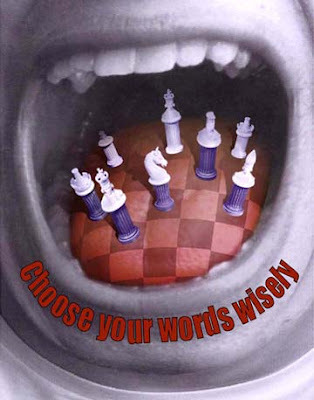
I was inspired to write this post after reading the article by Jairus Reddy over at the Hobbes End blog. It basically cautions authors, particularly indie authors, from being too forthright with controversial topics (i.e. politics and religion), or making asses of themselves in social media, because it can cost them book sales.
Anyway, this is a topic that has been on my mind for awhile now, and I think it's something anybody should have to consider when they start opening themselves up to the world, be it through books or music or any other trade by which you are using your name as your brand. It was something I even had to consider when I started doing freelance editing, because I didn't want to appear unprofessional to potential or current clients. How much of oneself is it prudent to share via Twitter and Facebook when you're trying to make a name for yourself in the world?
I'm pretty well aware that I've already opened Pandora's Box (aka "my mouth") a little too wide by this point. I've been online a long time. The internet, at least since 2005 when I started blogging, has always been an outlet of expression for me, and I'm a very expressive, "heart on sleeve" individual. I took really big advantage of that up until around 2008 or so. Hell, anyone who is curious enough about the sick and twisted inner-machinations of yours truly could spend a couple days rifling through my backlog of posts here, which I've since imported from the original domain. I've considered going through and deleting most of that, but seeing as how almost nothing is ever truly deleted from the internet, I've decided it's best to just own my past exploits -- for better or worse. Besides, I'm ashamed of none of it. Those are my words, and if anything, I think it shows a progression of a girl in her mid-20s still trying to figure out the world to someone who is perhaps still a little topsy-turvy, but is pretty damn sure of who she is.
But what about the now? I've always felt relatively "safe" from scrutiny until the last year or so, when I started branching into self publishing. Now that thousands of people have my work on their e-readers, I've started to feel more... Well, I guess paranoid isn't exactly the right word, but it's a close enough fit. Back in the day, I used to spend a lot of time on political message forums. I used to be very open with my opinions on much any topic with which I had a passing interest. My bold and brash and irreverent self was ready to take on pretty much anybody in a rhetorical boxing match if need be. It was a sport for me.
But in the last year, I've found myself abstaining from being TOO provocative. Oh sure, I'll share some topical news articles or the occasional blasphemous or politically incorrect picture on Facebook, but not in order to start debates. Mostly to amuse friends whom I know share similar views as me. And those friends of mine who disagree still (I think) respect me as a person because I'm not a total asshole.
I've worked hard to cultivate healthy and friendly online relationships in recent years, with all kinds of people. I don't know that I've curbed my need to "vent" quite to the extent that I'd like, but I keep most of that under wrap at Facebook, where such "inner" thoughts are not available to the public. I don't know that I will ever be able to be completely silent on certain topics. I'm not nearly as into core politics as I used to be, but environmental and human rights issues are huge for me, and I believe my views are consistent among most people. My need to express myself outwardly and respond to social injustices is as much a part of my personality as my compulsion to laugh at stupid jokes, and it also feeds my desire to write fiction. I'm not sure I could have any presence online if it didn't contain at least some of my slightly acidic flavor.
I am interested in attracting readers from all walks of life, and I believe my fiction work is universally appealing to Democrats, Republicans, Christians, Atheists, and every stripe in between. I certainly welcome any and all comers, and although you may derive pretty easily the direction in which my values lie just by reading my old blogs and Twitter feed, I realize I have to be a bit more careful these days and choose my words wisely. There are other avenues of expression for my beliefs that don't include being a passive-aggressive whiny wank on Twitter. And even if I wasn't trying to cultivate a decent public image, that's probably a good idea anyway.
Being a passive-aggressive whiny wank is just not something I'm into these days.
However, I still reserve the right to swear. You'll find plenty of that in my books anyway. ;)
Published on February 15, 2012 14:04
February 8, 2012
How Free Ebooks and Hobbes End Publishing Have Brought Happiness to My Universe
When I started offering some of my work up free of charge through Amazon, a lot of people thought I was nuts. Many writers go by the credo of not giving anything away, but I was sick of seeing my work wither away with nary a download or review. Were people not buying it because they thought it was bad, or because it just wasn't visible enough or because I was an indie with not much of a proven track record? Maybe it was all of the above. I wouldn't know until people actually read it. At any rate, I decided after nearly a year of waiting for something to happen that it was time to just throw the stuff out there and let the readers decide. And decide they did. The response to my work has been quite positive overall, and it has affirmed that I'm on the right path. In the process, I've gained a number of new "regular" fans that have made the leap to buying my paid downloads, and their reviews on Amazon have been influential enough to attract new readers. My short story "Vermin," just got its 20th review on Amazon today, and my following on GoodReads is growing by leaps and bounds.
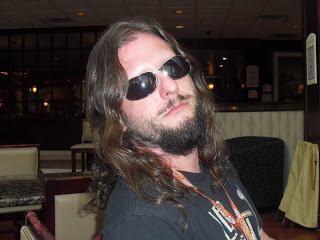
The coolest publishers wear shades.
Enter Vincent Hobbes, writer and founder of Hobbes End Publishing. He happened to be one of the thousands who downloaded some of my free stories, and he was particularly taken with "Dust." To the point where, when he reviewed it and started telling his circle of readers and fans about it, the story quickly became my most popular download. My sales on Barnes & Noble also increased. Mr. Hobbes also read other stories in my collection and after I contacted him on GoodReads to thank him, we started talking a bit. I showed him a few of my unpublished works, and he then passed on some of that work to his colleague Jairus Reddy, who runs the ship at Hobbes End.
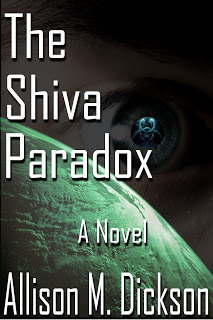
Concept Cover for Novel in Progress
It wasn't long after that I received an offer from them to buy two of my stories for the second volume of their Endlands anthology. One of those stories is an oldie but goodie, "Under the Scotch Broom," which continues to astound me with its longevity after nearly 20,000 downloads since September. The other is one none of you have seen yet, a science fiction-meets-Twilight Zone tale called "The Shiva Apparatus." I'm particularly excited about this one, because it is also a prequel to a novel I plan to finish and shop around later this year called The Shiva Paradox. Additionally, both short story and novel are set in the same universe as "Scotch Broom" (though you only get flashes of this through some strategically placed Easter Eggs).
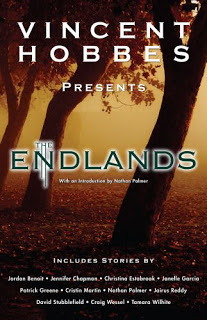
We likes the cover!
I'm not sure when The Endlands vol 2 comes out, but it's currently in production. You can buy the first volume right now and check it out for yourself. The quality of work in it is fantastic, and I'm thrilled that the guys at Hobbes End made room for me in the second volume. I will be proud to have my work alongside some pretty amazing talent.
So has there been some benefit to giving my work away on Amazon? That's an affirmative. Believe me when I say that when thousands have access to your work, there can be some pretty influential people paying attention. Hobbes and Reddy truly "get" the kind of writing I do, and that is refreshing to someone who has always had trouble finding publications that are the proper fit for my work. Also, I don't believe I ever would have crossed their paths if not for my decision make my work free in the place where the vast majority of folks with ereaders go for reading material.
Publishing is changing at light speed, and you're making yourself a part of a pretty incredible talent pool when you decide to go the indie route. While it can hurt the pride a little bit at first to see all that potential money go out the door, I think the long term dividends of free downloads are far greater. I look forward to letting you all know when the The Endlands vol 2 hits stores!

The coolest publishers wear shades.
Enter Vincent Hobbes, writer and founder of Hobbes End Publishing. He happened to be one of the thousands who downloaded some of my free stories, and he was particularly taken with "Dust." To the point where, when he reviewed it and started telling his circle of readers and fans about it, the story quickly became my most popular download. My sales on Barnes & Noble also increased. Mr. Hobbes also read other stories in my collection and after I contacted him on GoodReads to thank him, we started talking a bit. I showed him a few of my unpublished works, and he then passed on some of that work to his colleague Jairus Reddy, who runs the ship at Hobbes End.

Concept Cover for Novel in Progress
It wasn't long after that I received an offer from them to buy two of my stories for the second volume of their Endlands anthology. One of those stories is an oldie but goodie, "Under the Scotch Broom," which continues to astound me with its longevity after nearly 20,000 downloads since September. The other is one none of you have seen yet, a science fiction-meets-Twilight Zone tale called "The Shiva Apparatus." I'm particularly excited about this one, because it is also a prequel to a novel I plan to finish and shop around later this year called The Shiva Paradox. Additionally, both short story and novel are set in the same universe as "Scotch Broom" (though you only get flashes of this through some strategically placed Easter Eggs).

We likes the cover!
I'm not sure when The Endlands vol 2 comes out, but it's currently in production. You can buy the first volume right now and check it out for yourself. The quality of work in it is fantastic, and I'm thrilled that the guys at Hobbes End made room for me in the second volume. I will be proud to have my work alongside some pretty amazing talent.
So has there been some benefit to giving my work away on Amazon? That's an affirmative. Believe me when I say that when thousands have access to your work, there can be some pretty influential people paying attention. Hobbes and Reddy truly "get" the kind of writing I do, and that is refreshing to someone who has always had trouble finding publications that are the proper fit for my work. Also, I don't believe I ever would have crossed their paths if not for my decision make my work free in the place where the vast majority of folks with ereaders go for reading material.
Publishing is changing at light speed, and you're making yourself a part of a pretty incredible talent pool when you decide to go the indie route. While it can hurt the pride a little bit at first to see all that potential money go out the door, I think the long term dividends of free downloads are far greater. I look forward to letting you all know when the The Endlands vol 2 hits stores!
Published on February 08, 2012 15:48
February 3, 2012
A Letter to Stephen King
Dear Mr. King,

Ever since the age of eleven, when I used my babysitting money to buy my very first book of yours (which was Misery, by the way), you have been the voice in my head.
No, that's not quite right. It's more like you were the echo of a voice that had always been there, whispering of secret highways and secret worlds, revealing the "otherness" (sometimes frightening, but more often bizarre or fantastical) lying beneath the plain skin of ordinary life, and that the only way to articulate what might otherwise manifest itself as madness was to write about it.
I think about that every time I sit down to tell a story. I also think part of me will always be trying to reach out into the ether to say hi to you, and will always wonder what you would think about my work, because I'm not so sure I would be doing this if it weren't for you.
Though I have since moved on in search of my own voice and my own style, something that identifies my work as uniquely mine, I'm absolutely certain the landscape of my stories would look far different without the influences of such works as The Dark Tower or It or Pet Sematary or Eye of the Dragon or... take your pick. And sure, other authors as well -- Heinlein and McCarthy and Gaiman and Matheson and Poe -- but namely yours, because they just mesh with my brain waves in a way that few works ever have.
So I guess this little note is a way of reaching out into that ether again, of sending out a message in a digital bottle on the minutest off-chance it would sail across some vast binary sea to find itself in your port. And should you find the bottle and pull out this message, I hope that, if anything, you can take from it my gratitude for you being there, for "getting it", and for keeping that inner eleven-year-old in me believing even during my most cynical and uncertain moments in life that there are "other worlds than these," where shit is happening and waiting for people to write about it.
Seriously, thanks.
Sincerely,
A.

Ever since the age of eleven, when I used my babysitting money to buy my very first book of yours (which was Misery, by the way), you have been the voice in my head.
No, that's not quite right. It's more like you were the echo of a voice that had always been there, whispering of secret highways and secret worlds, revealing the "otherness" (sometimes frightening, but more often bizarre or fantastical) lying beneath the plain skin of ordinary life, and that the only way to articulate what might otherwise manifest itself as madness was to write about it.
I think about that every time I sit down to tell a story. I also think part of me will always be trying to reach out into the ether to say hi to you, and will always wonder what you would think about my work, because I'm not so sure I would be doing this if it weren't for you.
Though I have since moved on in search of my own voice and my own style, something that identifies my work as uniquely mine, I'm absolutely certain the landscape of my stories would look far different without the influences of such works as The Dark Tower or It or Pet Sematary or Eye of the Dragon or... take your pick. And sure, other authors as well -- Heinlein and McCarthy and Gaiman and Matheson and Poe -- but namely yours, because they just mesh with my brain waves in a way that few works ever have.
So I guess this little note is a way of reaching out into that ether again, of sending out a message in a digital bottle on the minutest off-chance it would sail across some vast binary sea to find itself in your port. And should you find the bottle and pull out this message, I hope that, if anything, you can take from it my gratitude for you being there, for "getting it", and for keeping that inner eleven-year-old in me believing even during my most cynical and uncertain moments in life that there are "other worlds than these," where shit is happening and waiting for people to write about it.
Seriously, thanks.
Sincerely,
A.
Published on February 03, 2012 19:55
January 31, 2012
The Anatomy of a Rewrite

Tear that shit down!
Today, I am going to provide you the most unequivocal evidence to date of why you should let your stories rest, and why rewriting is so very important. I'm not talking about editing, like I did back when I wrote a similar blog about my story "Vermin" awhile back. I'm talking about going back to the beginning of a story and completely redrafting it, maintaining only the kernel of the idea but scrapping nearly everything else, prose-wise.
I did this most recently with my story "George's Tonic," which you can now find on Amazon. Previous to that, the story was known as "Sweet Revenge," and it made its rounds on the literary mag circuit back in early 2009 or so, around the time I was still celebrating my first publication credit with "Aria" and thinking by that point that I'd "made it" as a writer.
What a laugh. If you're starting out as a writer, don't delude yourself the way I did. A publication credit does not make one a good writer anymore than some douchebag taking a picture of his six pack in the bathroom mirror and posting it on Facebook makes said dude a Greek god. By the time you finish reading this blog, I won't need to tell you that "Sweet Revenge," my little story about a neighborly feud, was soundly rejected by at least two dozen literary magazines. You'll be able to read for yourself why. I know I did, three years later when I opened it up for the first time and felt an overwhelming urge to flagellate myself into oblivion.
Of COURSE it was rejected! ZOMG woman! What were you thinking?! Bleed, damn you!
And so began of the process of taking what I thought was still a good idea and re-writing it using everything I had learned over the years about the craft. Flat cardboard cutout characters became more fleshy. The strange head-hopping-but-not-quite-omniscient "voice" became solidly George's, and the word count doubled in size as I fully explored the story's space. By the end of it, I felt like I knew every character intimately, and I cared for George as I would my own father.
You may not need to do this with every piece of work you have. In fact, I have material I wrote back around the same time period that, save for a few mechanical corrections, I'm still quite happy with. But sometimes you will hit a dud, and if you happen to be riding an ego trip like I was at the time I penned the first draft of "Sweet Revenge," then you will be even more convinced that your shit doesn't stink, and you will be inadvertently making a fool out of yourself by trying to publish complete excrement. Again, don't do that.
But enough of my blather. I'm here to make a complete fool out of myself again for your benefit. I'm going to show you, in the flesh, why some work can benefit from a long rest. Maybe not exactly a three-year rest, but at least long enough that when you open it again, it feels like a story someone else wrote. And that is when the real revisions can begin.
Here is the opening excerpt from the 2009 version, then titled "Sweet Revenge." This is not a rough draft. This is the "polished" copy that probably made at least two dozen managing editors even more jaded than they already were.
The fountain looked ridiculous. It was a towering edifice of three concrete pineapples, each set into the middle of a round concrete dish. The graduated tiers rose about seven feet over a blocky pedestal which also bore ghastly bas-relief likenesses of the fruit. If Medusa's awful, stony gaze had worked upon pineapples, thought George, they would look like those on the fountain.
The Stoughtons had been George's neighbors for five years. He had never exchanged more than casual pleasantries them, usually over the lids of their garbage cans. Only tourist traps like Las Vegas or Disney World hosted such bizarre pieces of sculpture like the fountain, but Kevin Stoughton sure was proud of it. He was proud of it like he was proud of the crude fire pit he had dug in his backyard which he often left smoldering through the night, which filled George's bedroom with the smoke and the acrid aroma of whatever Kevin Stoughton had deemed flammable that day; like he was proud of the cheap baby-shit-colored vinyl siding he'd hung over the house's original respectable cedar, which had already begun to pop its seams in spots; like he was proud of the pillars he had erected on his front porch which were both crooked and too big for the front of the tiny house. "They make it look architectural, don't they?" he had asked. The word "architectural" sounded as foreign in Stoughton's vocabulary as "caveat emptor."
Kevin Stoughton was proud of all of his improvements, and called them his "equity builders."George longed for a Homeowner's Association to punish Stoughton, but no such entity existed on Maple Avenue. Two years ago, George had cashed out his 401K to build a 7-foot high privacy fence between his and Stoughton's houses. The baby shit siding, the gaudy porch pillars, and even some of the fire pit smoke disappeared behind plank after beautiful plank of red-stained cedar. In spite of the exorbitant price of the fence, George felt he'd invested in his sanity.
Then the fountain came.
And here is the opening excerpt from the 2012 version of "George's Tonic," which is now available for purchase:
It all started with the fountain. The goddamn
fountain. Well… that isn't exactly true.
It really started five years ago, when the Stoughtons moved into the little
yellow house at 982 Maple and hung a confederate flag on the front door. George
Abling and his wife Bonnie, who hadn't yet been diagnosed with the brain tumor
that killed her some three years later, had grimaced at one another in distaste
the first time they noticed it, but they agreed to remain friendly. Union City
was a quaint little town, but it had its "types," as Bonnie had liked to call
them.If it had only been the matter of the flag, they
might have befriended the Stoughtons, but it wasn't to be. There were little
annoyances. The garbage cans that stayed on the curb seven days a week, the
Christmas lights that went up in December and didn't come down until April, and
the jack-o-lanterns that went onto the stoop early October and were nothing
more than piles of frozen orange sludge well into December.
Then the Stoughtons started amassing their hoard,
little by little. But that was also around the time that the doctors found the
spot on Bonnie's parietal lobe, so George didn't much pay attention to the
Stoughtons or anything else for awhile. It wasn't until after the funeral, when
he started looking out his windows again, that he noticed just how bad things
next door had gotten. A few fixer-upper lawn mowers had turned into a small
mountain. Then there were the fiberglass bathtub inserts, toilets, and faucets.
And the tires and the car parts and the concrete birdbaths filled with scummy rain
water.
More junk was added by the week, it seemed.
George learned from Andy Todd, the only neighbor he had maintained regular
contact with during Bonnie's ordeal, that Kevin Stoughton lost his job some
months back, and had started buying up mowers and other things to fix up and
sell as a source of income. Only none of the items seemed to be moving, and the
piles just kept growing.
From time to time, George would ask Stoughton
what he was working on, with the clenched jaw someone clinging to his last
vestige of neighborly civility. "Oh, just building up a nice supply of
moneymakers," he'd said. But those moneymakers would just go into the backyard,
and there they would rust or rot into uselessness. George imagined some intrepid
archaeologist on a dig would uncover all of Kevin Stoughton's treasures in a
thousand years or so, and they would be considered priceless artifacts from a
long lost civilization. Maybe that's what Stoughton meant by "moneymakers," but
George doubted it.
No, the fountain
wasn't where it all started. But it's where the end of it all started, and in
the end, it's only the end that matters.
I'm sure I don't need to point out the differences here. They're apparent all on their own, and they demonstrate how, at least in some instances, the element of time is necessary not only for a story to develop into something better, but also the writer. In 2009, I was just getting started doing this. I'd quite literally stumbled into a bit of luck having my first effort purchased by a publisher, and at that point I was feeling pretty bulletproof. I'd had all the validation I'd needed. Well, I got quite a wake up call after "Sweet Revenge." I didn't go on to have anything else published for at least another year, and I wrote several stories during that time period, none of which were any damn good.
So if you're just starting out, or if you're writing now and you keep striking out, I have two pieces of advice.
1. Don't throw anything away. Even if you go back to it some years later and find it stinks to high heaven with all of the things you didn't know back then, you may be pleased to find that you can take everything you've learned over the years and make it into something to be proud of now. Or you may just decide it isn't worth it at all. At any rate, it's a learning experience, and it can be a positive one if you want it to be.
2. Don't ever think you're as good as you're ever going to get. Even seasoned pros discover something new about themselves with everything they write. And if you don't think that's true, crack open something you wrote three years ago and compare that to something you wrote two years ago, and compare that to something you wrote a year ago, then compare that to something you wrote yesterday. Even if it's still essentially "you," and even if only you or your closest beta readers would really be able to tell the difference, you should still notice subtle changes. Something that shows your evolution as a writer. You can even try the same trick with your favorite authors. If you think the Stephen King who wrote wrote Carrie is the same Stephen King who wrote 11/22/63, you're on crack.
Anyway, I hope this little before and after can help some of you. I'm going to excuse myself now, though. I feel a little naked.
Published on January 31, 2012 07:18
January 29, 2012
This is a Test of the Amazon KDP Select System...
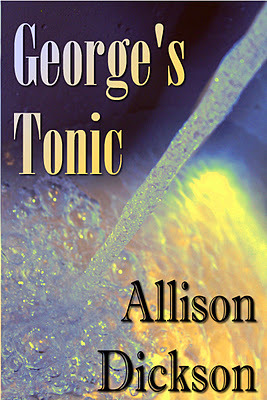
Back in December when I learned that Amazon was offering authors part of a $600,000 pot to allow the book giant exclusive rights to make their works available in a lending library, I was dubious.
For one thing, many writers saw this as a total rights grab on the part of Amazon. If Amazon finds you've violated their rather restrictive fine print by offering your story anywhere else in digital form, they reserve the right to withhold your earnings or possibly even suspend your account. Of course, anyone who dares to peruse almost ANY fine print, would likely be surprised at how many places they've signed their life or possessions away. So I wasn't particularly disturbed or surprised by Amazon's policies here. Not in the "Cloud Age," especially. If Amazon is offering much higher royalties to their authors, of course they're going to demand exclusivity, and of course they're going to protect that.
However, this means that for those writers who like to use the distribution channels made available through Smashwords, or who like to have their work available for Barnes & Noble customers, it means waiting until the three month KDP Select period is over first. Or it means pulling existing work off of all of the other ebook shelves out there before enrolling in the Select program.
And you might be asking, is it worth it?
Well, I don't know about you, but my Barnes & Noble sales are roughly 1/5 that of Amazon (for paid titles...maybe 1/3 for freebies). The Smashwords ratio is even tinier. While having my work available in other channels helps for visibility, it doesn't benefit the bottom line. The readers, or at least MY readers thus far, are predominantly at Amazon. I'm not saying that I intend to alienate my readers on other platforms. Far from it. It just means that this is the one reason KDP Select was appealing to at least check out on a trial basis.
I have writer colleagues who also seem to be making better money through KDP Select than through standard sales. Every time someone borrows a book through the Prime lending library, the royalty cut is a little bigger than if someone buys it outright. This is appealing, and I plan to see if the math bears out similarly for me with my latest release, GEORGE'S TONIC.
Of course, I'm not sure if this will be a very good comparison. GT is not a typical story for me, because it's a mainstream fiction tale rather than my usual horror/sci-fi. So if GT sees success as part of this test, I won't know if it's because people are responding specifically to my work, or if I've attracted a different audience with a different kind of story.
At any rate, I think that given the success I've had thanks to the Amazon platform, it's worth giving them a three month run with one of my stories. And on April 27th, I plan to make George's Tonic available in all formats.
If you're an Amazon Prime member, you can read George's Tonic for free right now. However, if you're without a Prime membership, don't despair! I'm allowed to have five days per 90 period to make the book free, and I will be using three of those days starting on January 30th, so everybody can get a taste of the Tonic.
I'll be back to update with my success (or lack of it). Whether the results are decent or terrible, I figure it's a good learning experience.
Published on January 29, 2012 12:56
December 31, 2011
2011 in Conclusion, and Some 2012 Wishes

It's been an eventful year. I saw my online sales take off on Amazon after a series of free titles garnered thousands of downloads and received overall quite positive reviews; I started a successful podcast (Creative Commoners) with two great friends, where we have been watching our following grow little by little and will hopefully see that continue into 2012; I did a short volunteer writing gig with Pop Blend; I released Scarlet Letters in print; I swam several miles, and I had my gallbladder out.
All in all, lots of good things.
I've also learned a lot about myself as a writer and what defines success. Although I would still be thrilled to receive that "Big 6" book deal, I have also learned that there are many ways to crack the nut of getting published, and I've learned that it's all about being open-minded, resourceful, and diverse. Whether they are people downloading content directly or buying it off the shelves, it's been a real thrill to have people I don't know actually reading my work. It's reaffirmed why I want to do this and why, ultimately, it's the thing I was made to do. I thank everyone who has read my work, even the ones who didn't like it. Without them, I wouldn't really have a very honest yardstick against which to measure myself. No one benefits from having sunshine blown up their ass 24/7. My laurels love ever so much to be sat upon, so the criticism, even when it stings, keeps me humble and makes me better.
So there is a lot in store on the creative front, but I discussed that in a previous blog post, so I don't need to go there. So I'll just conclude with a few wishes for the upcoming year.
I wish for my husband to find happiness and contentment in a workplace that appreciates his brilliance and pays him accordingly. Not only because we could use the money, but because when it comes to a job, everyone should be paid what they're worth, and he's worth a hell of a lot more than he's being paid.
I wish for my dad's business to continue to flourish and for my mom to be able to follow her passion for art and sculpting.
I wish for my daughter to enter middle school and to alleviate all of my anxieties and fears that I have about that particular era in a child's life by not becoming one of the nightmarish kids I remember from my own days in middle school.
I wish for my cat to stop barfing and stressing me out and to get the memo that he's supposed to be immortal, dammit.
I wish for people who think the apocalypse is nigh this year to get out and enjoy their lives a little more instead of obsessing over shit over which they have absolutely zero control and is probably fiction anyway. And if I turn out to be wrong about that, I really hope the apocalypse has better special effects than the Roland Emmerich movie.
I wish for Grand Theft Auto V to be released in the earlier part of the year rather than the latter, so I have more time to play it in case the previous bullet point comes to pass.
I wish to become better and better at what I do, and that not only includes writing but also includes mothering, being a better wife, eating healthier, designing better book covers, not procrastinating so damn much, and living up to my potential.
I wish happiness and fulfillment for all.
That's about it, I guess. I'm sure I could have tacked more things on there, but "moar readers" and "millions of dollars" is all pretty self-evident.
Happy New Year to everybody near and far, lovers and haters alike. May you all find reason to celebrate in the coming year.
Published on December 31, 2011 16:04
December 28, 2011
Coming to an Ebookstore Near You in 2012! And a Word on Pots and Pans!
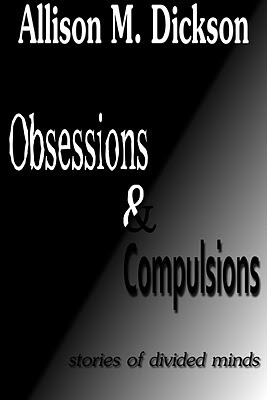
It's official. My ebook selections have grown stagnant. I've been sitting on a small cache of short stories for awhile now, some new, some old, some ancient, and it's time to get them packaged up and out into the world. A couple of them I wanted to try out in the traditional publishing world first, but I won't lie: I'm impatient. I spent years having my work tied up with one magazine or another only to receive rejection after rejection. Not complaining or anything. That's just the nature of the beast, and if you have the patience for it, more power to you. Now that I have a growing audience and an ability to release things directly to them on my own timetable, I feel obliged to go that route more than ever now.
Not that I've completely given up on print. I will always pass my newest science fiction tales through my favorite magazines first. Publication in Analog, Asimov's, and Clarkesworld is still one of the items on my bucket list, after all. Anyway, the newest collection of short stories is called OBSESSIONS & COMPULSIONS, and it's going to be a tad more ambitious than my first one, DEAD WIVES TALES. I want it to have at least twice as many stories, and I'm thinking up some additional goodies to put in there as well. We'll see what all I can get done in the next few weeks. And as I did with DEAD WIVES TALES, I intend to offer a couple of the titles as separate downloads. One of them is called TASTE, and you should be seeing that one in just a few days.
And fret not, those who want MOAR NOVELS. It's happening. Revisions are hot under way on THE STARGAZERS, a dark contemporary fantasy about a family of witches and their twisted infanticide ritual. It even has a cover, designed by my friend Florence Sorensen. She's looking to do more covers, so if you like what you see here, shoot her an email, why don't you? Provided I don't manage to get a book deal with it (I have a few small publishers in mind to which to submit it), it will be up for download sometime in late February/early March, and there will likely be a print option to follow.
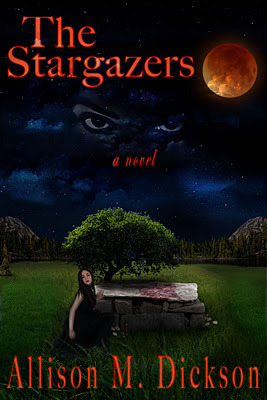
Now that I've spent the requisite time on plugging my own work, I'm going to switch gears and talk about something completely different: my new All-Clad saute pan, which I received for Christmas from my awesome mother. I've been obsessed with owning a piece (or many pieces) of All-Clad for the last decade. But its cost has always been so prohibitive, and I had a hard time justifying ditching my perfectly serviceable stainless steel Cuisinart set. Oh sure, it's total junk compared to All-Clad, but it has been good to me, and while I might not break out into a Rick Astley tune over it, I'm still not quite gonna give it up.
But will I perhaps gradually replace pieces of it with beautifully shiny All-Clad over the next several years until I have no choice but to pass on the Cuisinart to a needy recipient?
Um, yeah.
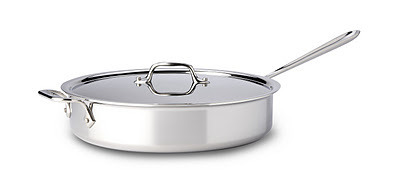
Published on December 28, 2011 19:56



